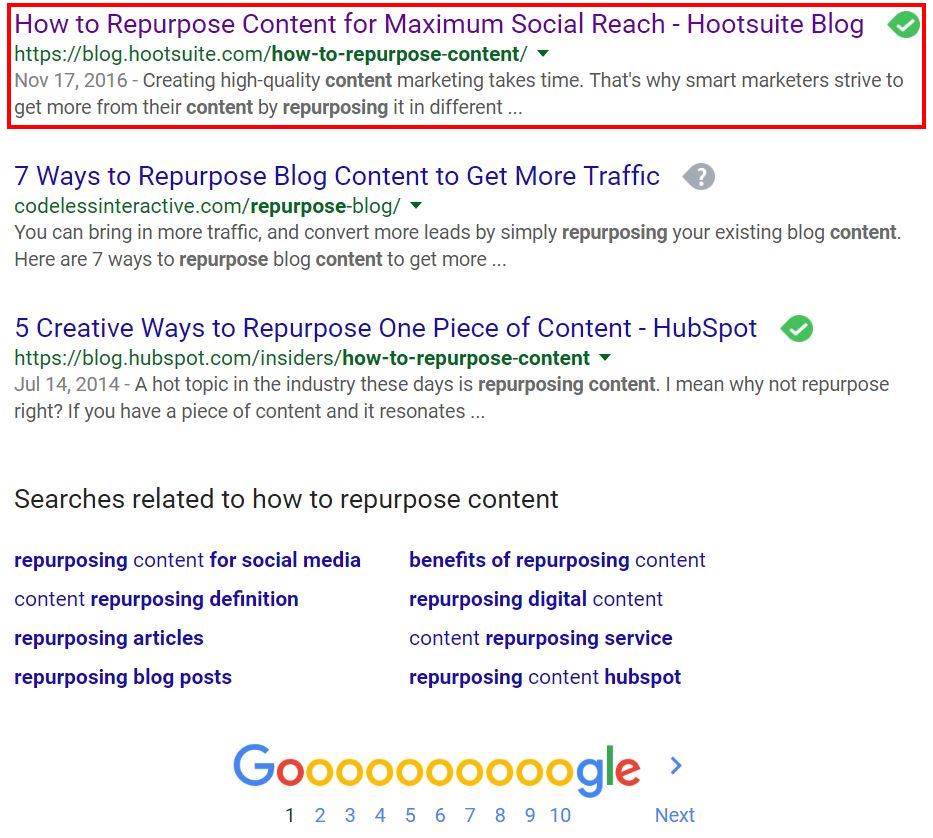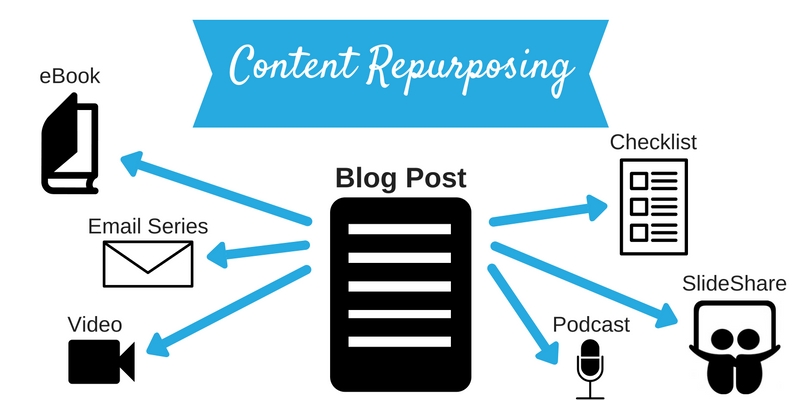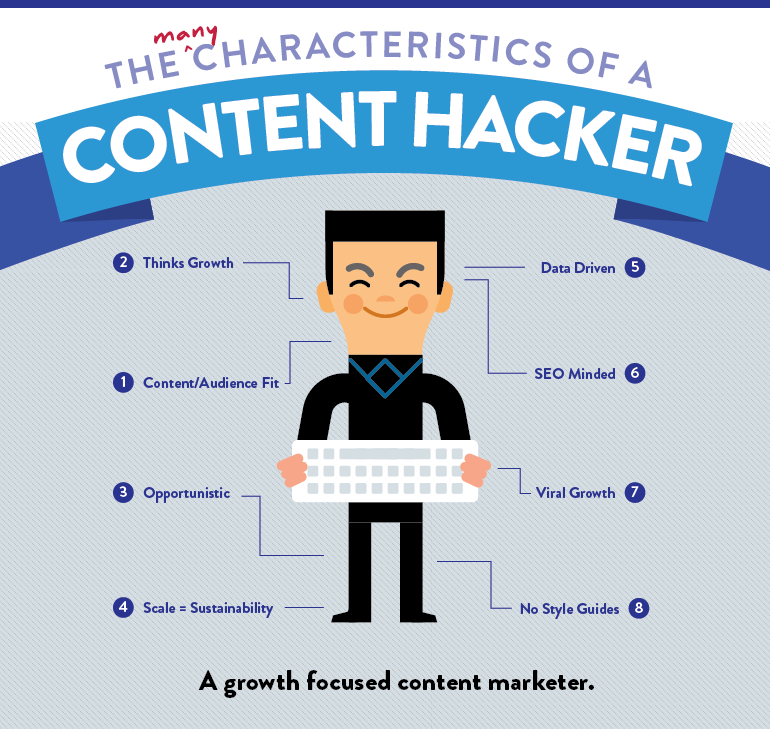Have you ever considered using content marketing to grow your business?
Content marketing, boiled down to it’s most basic definition, means creating, promoting, and profiting from worthwhile content.
According to Content Marketing Institute…
“While content marketing costs 62% less than outbound marketing, it generates more than three times as many leads.” (Tweet this!)
In fact, I was able to grow my traffic by over 100% without spending a dime using content!
In this post, I’m going to explain to you exactly what content marketing is (and isn’t) and how you can use it right now to grow your own business.
Since this is such a long post (5000 words and counting), I’ve included a table of contents so you can jump right to what you’re looking for.
Be sure to bookmark this page in case you can’t get through it in one sitting!
Table of Contents
The story of how I defined content marketing
The benefits of content marketing
Everything you need to get started content marketing
How to market your content
How to measure the effectiveness of your content
Tons of content marketing tools and resources
The Story of How I Defined Content Marketing

I came to my definition of content marketing after years of study. Here’s the story of where it comes from:
If you’re anything like me, you’re probably really curious about how to grow your business and the strategies that really work.
Four years ago, I felt that very curiosity. I was a marketing director for a small vitamin company and wanted to learn how to make it grow. There was potential for me to become part-owner, so it’s success meant a lot to me.
Early in my search, I stumbled upon this thing called “content marketing” and it instantly piqued my curiosity. Growing my business without spending a ton of money on marketing tactics that don’t seem to be working? Count me in!
I spent my afternoons devouring books like Joe Pulizzi’s Content Inc. and Epic Content Marketing and reading blogs like CopyBlogger, Neil Patel, and Backlinko. (More on blogs, books, and other resources in the “resources” section.)
I watched every video I could find on the topic and even took HubSpot’s inbound marketing course.

After practicing content with the vitamin company for a bit, I realized I had much more potential than vitamins. I wanted to help businesses create content for a living. So I started freelance writing on the side.
After freelancing for almost two years, I started adding consulting to my belt and talking with anyone who would listen about how amazing content marketing is. I practiced what I preached, and created dozens of guest posts around the topic.
I started to make enough money to do this full-time – so I did. I left the company and pursued my entrepreneurial dreams. Since doing so, I’ve worked with over a dozen clients and have been seen on sites like SEMrush, HootSuite, Social Media Examiner, and Search Engine Journal, all thanks to content marketing.
Content marketing helped me grow my personal brand without spending a dime on marketing.
It’s my four years of experience that led me to my definition of content marketing, which I’ll repeat: Content marketing is the process of creating, promoting, and profiting from worthwhile content.
Now that you know who I am and why I’m such a strong advocate of content marketing, let me dive a little deeper into the subject.
Benefits of Content Marketing
Why would you want to use content marketing for your business?
That’s a great question. Content marketing can help you:
Increase traffic

Why would anyone want to visit your website if you don’t offer unique and valuable content?
Really stop and think about that for a moment.
Chances are, they would only ever go to your site if they already know they need your product or service and are ready to buy, or if you actually managed to pique their interest with an ad (which probably interrupted them while doing something else, like scrolling down their Facebook news feed).
Why else would they go to your site? There really is no other reason.
By offering your visitors and customers content (like a guide or industry news update), you’re giving them a reason to visit your site. Not only that, but you’re giving them a reason to share your site as well.
Thus, increased traffic. (Assuming you’re marketing effectively!)
Rank higher in search engines

Search engine optimization (SEO) is the process of optimizing your website based around targeted keywords in order to rank higher in search engine results for those keywords. It’s one of the most important marketing ideas around right now.
There’s an SEO section further down the page where I’ll talk about this more, but know this:
Without content, SEO is a b*tch. You have to rely on your limited number of landing pages and website copy to get you to the top.
Content simply makes it easier to rank in search by giving you more chances (by having more keyword-targeted pages) to rank.
Drive conversions

The folks at Content Marketing Institute found that…
“Content marketing drives 6 times more conversions than interruptive outbound marketing. It drives more qualified leads and increases your chances of converting those leads into customers.” (Tweet This)
How?
For one, you can link to your product pages and landing pages from within your content, creating non-interruptive advertising.
For two, content offers, which I’ll explain in a bit, make it easier to capture strong leads.
Build brand awareness

Brand awareness is kind of ambiguous, isn’t it? What does “brand awareness” really mean? It took me a long time to understand it.
Basically, it means people are aware of you. Your name is on their radar. They might recognize your company or your logo if they saw it.
Content marketing helps with brand awareness and brand recall by helping you stay in front of people more consistently. It also works through the mere-exposure effect; people tend to like things just by seeing them repeatedly.
“56% of marketers believe that personalized content promotes higher engagement rates.” (Tweet This)
Develop authority & thought leadership

Have you ever stumbled upon an article that was just really freaking awesome? I mean, it answered all of your questions and even questions you didn’t know to ask.
What did you think of the brand or author who created it? I’ll bet you instantly had more trust in their ability, right?
Content marketing gives you multiple chances to be that article someone finds and gives you instant credit. It silently and effectively promotes you as a thought leader in your industry.
Create strong relationships
I saved this point for last because building relationships is the single most important benefit of content marketing.
Content helps build relationships with influencers, your customers, other businesses, and even employees or coworkers, if you have any.
This is because content marketing builds trust, and great relationships are built on trust.

Without trust, your customers won’t buy from you, influencers won’t work with you, and employees will quit on you.
How does content build trust?
By providing value: To your customers in the form of education or entertainment (preferably both), to influencers in the form of acknowledgment and partnership, and to your employees or coworkers by involvement in a bigger cause and acknowledgment of their skills.
You can leverage these relationships to get more traffic (from influencers and customers sharing your content), more sales, and, most importantly, lead a more fulfilling life!
But my rant’s over, let’s move on.
Everything You Need to Get Started Content Marketing
Alright, let’s get down to it. This section covers all the basics to getting started with content marketing and links to more in-depth coverage of each step.
To ensure you get to exactly where you need to go, here’s a high-level overview of everything I’m about to cover:
- Creating a target persona
- Choosing a topic
- Creating content
- Search engine optimization (SEO)
- Content offers (sometimes called “content upgrades” or “lead magnets”)
- Repurposing your content
Alright, let’s rock n’ roll!
Step #1: Creating a target persona

Before you do ANYTHING you have to know who you want reading your content.
Having even a basic documented content marketing persona will help you understand what kind of language to use (as far as tone and style), what level they’re at (beginner, intermediate, advanced), and what their pain points are…
…all of which will reduce your bounce rate, increase your conversions, and make everyone’s life better (more on measuring your content’s bounce rate and conversions later).
So, how the heck do you create a marketing persona? Head over to this guide at Buffer to find out.
Step #2: Choosing a content topic
Once you’ve determined who you’re writing to, it’s time to figure out what to write about.
Word of Warning: I do NOT recommend skipping this step and diving straight into creating content. You could end up with a lot of wasted effort and poor results if you do.
When deciding on a topic to write about, ask yourself:
What do I know a lot about, or enjoy learning about?
Unless you have a general love of learning (if so, welcome to the team!), you’re going to be very hard-pressed to write a 3,000-word article every week about a topic you hate.
Of course, your topic should also consider two things:
- What is my business about? (i.e. What topics make sense?)
- What does my persona (see the previous step) care about?
That said, you can still write about a topic that doesn’t necessarily have anything to do with your business. Alex Turnbull is the founder of Groove, a customer support desk software, and their first blog was about entrepreneurship.
Here’s a guide to figuring out your perfect content topic.
Step #3: Creating your content

Now comes the fun part: Actually putting pen to paper (or fingers to keyboard)!
I’ll let you in on a little content creation secret…
You don’t necessarily have to be an amazing writer to create great content.
“BS!” I hear you shouting. Wait, before you put me out to the sharks, hear me out.
More goes into content creation than simply writing. I also believe anyone can become a great writer if they’re willing to learn, but let me explain…
Amazing content needs four things:
- Amazing formatting
- Great images and media
- Solid research sources
- At least two rounds of editing
If you can manage to hit on all four of those, you can make even mediocre writing shine.
But, if you’re still not keen on writing, you have some other options:
- Hire an editor on Fiverr or UpWork to polish your bad writing (stick to people with great reviews)
- Hire a writer to do it for you (this can be pricey, but worth it)
- Choose a different type of content medium (like podcasting or videos)
If you want to learn more about how to create amazing blog content, I wrote a guide for you. If you’re keen on podcasting, check out JLD from EOfire’s free podcasting course. Finally, if you prefer video, here’s a guide to help you with that.
Studycrumb has a lot of great free tools to help with content creation, including: check word count, readability checker, URL shortener, plagiarism checker, and others.
There’s another kind of topic I didn’t mention till now: User-generated content (UGC).
UGC is a whole different beast. It can be some of the best content, while also taking up none of your time because you didn’t create it. It’s the user reviews, customer pictures of your products on Instagram, and testimonials.
Check out this guide to UGC by Sprout Social if you’re ready to tackle this beast.
Step #4: Optimizing your content for search engines (SEO)

This is a HUGE topic, so I’ll just touch on it briefly.
SEO can be as simple as cleverly adding keywords in the right places, covering all the semantic and related topics to your blog’s main topic in-depth, and getting some high-quality backlinks from top sites.
Of course, that’s barely scraping the tip of the iceberg. If you want to learn more about SEO, I suggest checking out this full guide.
Step #5: Creating content offers
Content offers, sometimes referred to as content upgrades or lead magnets, are free downloads or resources you give to your visitors in exchange for their email.
[fancythemes-notification]Here’s an example of a content offer:
Download my FREE eBook: The Building Blocks of Content Marketing[/fancythemes-notification]
This is a great way to turn visitors into leads. Content upgrades, in particular, work so well because they are related to the content your visitor is currently reading.
For example, let’s say you write an article called “10 Exercises to Lose Belly Fat Fast”. In that article, you offer a content upgrade in the form of a worksheet for your reader to track their workouts that you just gave them.
Content upgrades could come in the form of:
- eBooks
- Cheat sheets
- Templates
- Resources list
- Checklist
- Worksheet
That’s just to name a few. You get the idea.
You should make it a habit of creating a content upgrade for every article, or at least making one that’s relevant to multiple topics so you can share them on every post you write. There’s almost always a way to sneak in a content upgrade without sounding spammy or pushy.
I wrote a full guide to creating content upgrades you can use to get started on this process.
Step #6: Repurposing your content
Creating the amazing content required for content marketing takes a lot of time.
In order to make the most of that effort, rather than creating new content from scratch, you should repurpose your content into a different format.

For example, you could take a blog post and turn it into a video, a podcast, an infographic, a SlideShare presentation, and even a content offer like an eBook.
Check out the guide to repurposing content I wrote for HootSuite’s blog to learn more about this practice.
That’s the end of this section. Time to talk about the flip side of the content coin: marketing.
Marketing your content
You should spend as much time marketing your content as you did creating it.
You already get that content without marketing is pointless. So how do you do it? Feel free to jump around to the section you want:
- Social media marketing
- Email marketing
- Influencer marketing
- Guest posting
- Paid advertising (PPC)
- Growth hacking
Social media

Social media and content marketing go hand-in-hand. One without the other just isn’t the same.
With so many social media platforms out there, how do you know which ones to focus on? For that matter, how do you even become effective at them?
When it comes to social, I believe in three things, regardless of the channel:
- Be social! Interact with your followers. Tag them, share their stuff, and randomly send them a funny meme or gif. Show your personality a bit. If you believe in a cause, share it. If you love pandas, tell people about it.
- Focus on providing value. There’s that value word again. Don’t just see your social channels as an RSS feed for your blog. Share interesting stuff, even if it’s not yours. Answer people’s questions and just be genuine.
- Don’t sound like a robot. With all the automation tools available like Buffer and HootSuite, it can be easy to roll out the same, robotic message again and again. Do your best to spice things up a bit.
Now then, which social media platforms should you be on? Eventually, I think you should be on all of them… but not from the start.
My best advice: Start with one or two, master them, then move onto one or two more. Rinse and repeat until you’re on all of the major players.
I personally love Facebook and Twitter, but that’s just me. If your business is very photo-heavy, start with Instagram and/or Pinterest.
Here are some guides to help you market on social media:
I can’t talk about online marketing without mentioning email. It’s still one of the largest marketing players around, despite also being one of the oldest. According to CampaignMonitor:
“There are 3x more email accounts than Facebook & Twitter accounts combined. You are 6x more likely to get a click-through from email than Twitter!” (Tweet This)
Email marketing practically goes hand-in-hand with content. When sending an email to your list, you need to (surprise, surprise) offer them something of value!
Your awesome content is valuable! Of course, you also need some copywriting skills to make them open the email and click on the links inside, but you can see how content helps you.
However, like social, you shouldn’t just automate sending your content to your email list with no thought or intention. Here’s a list of 15 emails you need to send to your list if you need some inspiration.
If you don’t have a list or don’t have the first clue about what to do with your list, here’s an awesome beginner’s guide to email marketing.
Influencer marketing
Influencer marketing is becoming more and more important to help differentiate and market your content. With the crowded ocean of content online today, you need every edge you can get.
An influencer is anyone with an engaged following on social media or with a large, engaged email list. Someone who people look up to.

A few examples of influencers I follow include:
- John Lee Dumas, founder of the EOfire podcast where he interviews entrepreneurs daily.
- Sujan Patel, a really cool dude who’s a pro growth hacker and content marketer.
- Sam Hurley, ranked No. 1 digital marketer in the world by Webinale.
- Neil Patel, one of the world’s greatest online marketers.
So, as you can see, influencers don’t have to be celebrities or people who are impossible to reach. I regularly talk with three of the four influencers above, and they’ve all shared some of my content.
Working with influencers can increase your reach and authority. However, there is one thing you HAVE to keep in mind when working with them:
Influencer marketing is all about building strong relationships over time.
It can take weeks or even months of hard work to develop that relationship with an influencer. But they’re worth their weight in gold once you have them.
My personal secret to influencer marketing? Focus on providing value to them, and care more about the relationship than gaining anything from it.
I want to be friends with these people, not just have them share my stuff.
Ready to get influential? Check out this mini-guide to influencer marketing I created.
Guest posting

Guest posts (sometimes called “guest blogging”) are an incredibly powerful way to increase your traffic, conversions, and authority really fast.
(Interested in guest posting on my blog? Contact me.)
When you guest post on an industry-leading blog, you have the ability to borrow their huge, highly engaged audience. You’re borrowing their authority as well – if you get on a high-ranking blog, people will associate you with high rank and trustworthiness.
The keys to successful guest posting are:
- Getting on the right blogs. There are plenty of blogs willing to accept guest posts from anyone, but chances are they won’t do you any good. Find two or three top ranking blogs, and focus on getting on those.
- Providing tons of value. There’s that word again – “value”. In other words, write an incredible post, just as you would for your own blog. Hell, write a better one – more people are likely to see that one that the one on your blog anyway.
- Building those relationships. The vast majority of online marketing is about building strong relationships – guest posting is no different. You have to work hard to build a relationship with industry-leading blogs. Work hard to keep them as well.
Paid advertising (PPC)
I’d be remiss if I neglected the paid part of content marketing. Pay-per-click (PPC) advertising, when done correctly, can compliment your content strategy very well.
Types of paid content distribution include:
- Social media ads
- Search engine ads (like Google AdWords)
- Display & native ads (like Outbrain)
Neil Patel wrote a nice guide to paid content promotion, with some other guides on setting up your PPC campaigns.
And if you need some more help or prefer visuals, check out SMBclix’s AdWords optimization infographic!
Growth hacking strategies

Growth hacking is like the guerilla marketing of the online business world. It’s basically a free (or highly efficient) way of marketing and growing your business using creative tactics.
Some types of growth hacking (we’ll call it “content hacking”) include:
- Answering questions on Quora, LinkedIn groups, and forums.
- Offering a free email course
- Comment marketing
Neil Patel also has a full guide to growth hacking for content marketers you should check out as well if you’re interested in content growth hacking.
Measuring the Effectiveness of Your Content Marketing
One of the most common questions I hear is, “How do I know if my content marketing is working?”
Without measurement, you have no way of knowing. Your throwing darts in the dark, not knowing if you’re even facing the dartboard. You need a way to turn the lights on: Analytics!
Analytics!
Google analytics

I’ll admit – talking about analytics is about as fun as watching paint dry. But, as content marketers, we have to learn it. It’s the only way to determine what’s working and what’s not.
If you haven’t already set up Google analytics on your site, do so. Here is a guide to setting it up if you don’t know how.
While you can drown in a sea of data using analytics, my personal favorite stats to track are:
- Bounce rate – How many people leave after viewing a single page.
- Time on page – How much time they spend on each page.
- # of pages visited – How many pages they visit before leaving.
- Subscribers – How many people signed up for your content offer or newsletter.
- Conversions – You have to set special goals for this one, but it will show you how many people are converting into customers, where they came from, and which pages they visited beforehand.
Buffer created the marketer’s guide to Google analytics if you’re ready to learn more.
Setting up UTM parameters
UTM parameters are additions to the URL of your content that allows you to track where the traffic is coming from. Here’s what a UTM parameter looks like:

Pro Tip: Use a unique UTM parameter for each individual traffic source: different social media channels, guest posts, email, etc.
I found this guide to setting up your own UTM parameters when you’re ready to try it out! You can also check out KontextURLs for more advanced UTM parameters.
Moz & AHrefs
Moz and AHrefs are two additional tools that, while pricey, can help you track the SEO portion of your content efforts.
Moz touts itself as the “complete SEO toolset”. It gives you basically everything you need, from keyword research to competitor research, rank tracking, and more. It starts at $99 per month and goes up from there.

AHrefs is very similar, but slightly more affordable at $82 per month and up (although the second highest plan is the same as Moz – $149 per month). It allows you to track your backlinks, keywords, and brand mentions and keep an eye on your competition.
Personally, I like them both. Which you go with is up to you. Moz’s founder, Rand Fishkin, is an awesome guy, so that sways me a bit to choose him over AHrefs.
Tweaking Your Content Based on Data (and Feedback)
Knowing all your stats is worthless without action. This section covers what to do with all the data you worked so hard to earn.
CoSchedule has a complete guide to using data to fuel your content marketing efforts. I recommend checking that out.
Besides data, getting direct customer feedback is another, potentially better route. You’re getting it right from the mouth of the people you’re trying to please.
You can create a free survey using a tool like SurveyMonkey to ask your customers what they like/dislike about your content or what their burning questions are about your topic.

As an example, here’s a super quick survey I made with SurveyMonkey asking my followers to tell me their questions about content marketing to learn about my own audience. (I still answer every response, so feel free to fill it out if you have a question!)
Alternatively, get on the phone with them. I love this approach because it helps you build a relationship while also getting an in-depth idea of what they’re looking for.
Offer free consultation calls (you can get 15 minutes on the phone with me!) or ask to interview them. Everyone loves being interviewed.
The Ultimate List of Content Marketing Tools and Resources
We made it through! Before I formally wrap things up, I wanted to give you some resources and tools I use to make content marketing easier, faster, and better.
Top-Notch Blogs, Podcasts, and Video Creators
- Content Marketing Institute – All about content marketing.
- CopyBlogger – Content marketing and copywriting.
- Neil Patel – All things online marketing.
- Backlinko – SEO and growth hacking strategies.
- EOfire – A daily podcast interview with entrepreneurs from all walks of life.
- CoSchedule blog – Content marketing and scheduling.
- Convince and Convert – Ranked #1 content marketing blog, but also covers all internet marketing.
- Social Media Examiner – The best social media marketing blog on the web.
- HubSpot – All about inbound marketing.
- SEMrush – SEO and cotnent marketing.
- Search Engine Journal – SEO and content marketing.
- Conversion Sciences – Conversion rate optimization.
Tools
- Canva or Adobe Spark – Create amazing designs free and fast.
- Trello – Create task boards to get organized.
- Gsuite – Everything from spreadsheets to word documents and more, with built-in collaboration.
- Brain.fm – Get energy for creative work through sound waves. It’s amazing.
- BuzzSumo – Find viral content and top influencers, fast.
- SumoMe – Free social sharing buttons and tons of ways to capture emails. Just pure value. Must-have.
- Buffer or Hootsuite – Schedule your social media posts for free (or cheap). Get advanced analytics for a little more $$.
- CoSchedule – Excellent content calendar tool.
- Slack – A messaging app for teams.
- Mailchimp – Easy-to-use and affordable email marketing automation software.
- Google Analytics – Self-explanatory, no?
- Feedly – Get all the content from the blogs I mentioned above, right in one streamlined dashboard. I love Feedly!
- Quora – Find out common questions, drive traffic through answers, and ask your own questions.
- Evernote – Keep all your notes across all devices in one app.
- Open Site Explorer and MozBar – Track domain and page authority and inbound links.
- CoSchedule’s Headline Analyzer – Get a ranking to ensure your headlines rock.
- HubSpot’s Blog Topic Generator – Never run out of topic ideas again.
- SEMrush – Easily perform extensive keyword research. Awesome 14-day free trial too!
- Grammarly – Become a better grammarian and writer automatically.
- Hemingway App – Copy-paste your content into here to learn how to make it better and more readable.
- Unsplash – Free breathtaking stock photos.
- SurveyMonkey – Create beautiful surveys for free..
Am I missing a great tool or resource? Let me know in the comments or contact me about it so I can add it!
Conclusion
I hope you now have a firm understanding of the best marketing tactic of the twenty-first century: content marketing.
We covered a lot in this article, so you probably won’t be able to get to it all in one sitting. Don’t forget to bookmark this page so you can come back to it and learn as you go!
Content marketing is a massive subject, but if you simply understand the definition and slowly work your way towards it, you can start implementing it right now and see great success.
Content marketing is the process of creating, promoting, and profiting from worthwhile content.
Note: Do you want to become a freelance content marketer for a living? Check out this free marketing proposal template. Bidsketch spent $1500 creating it, so take advantage while it’s still free!

